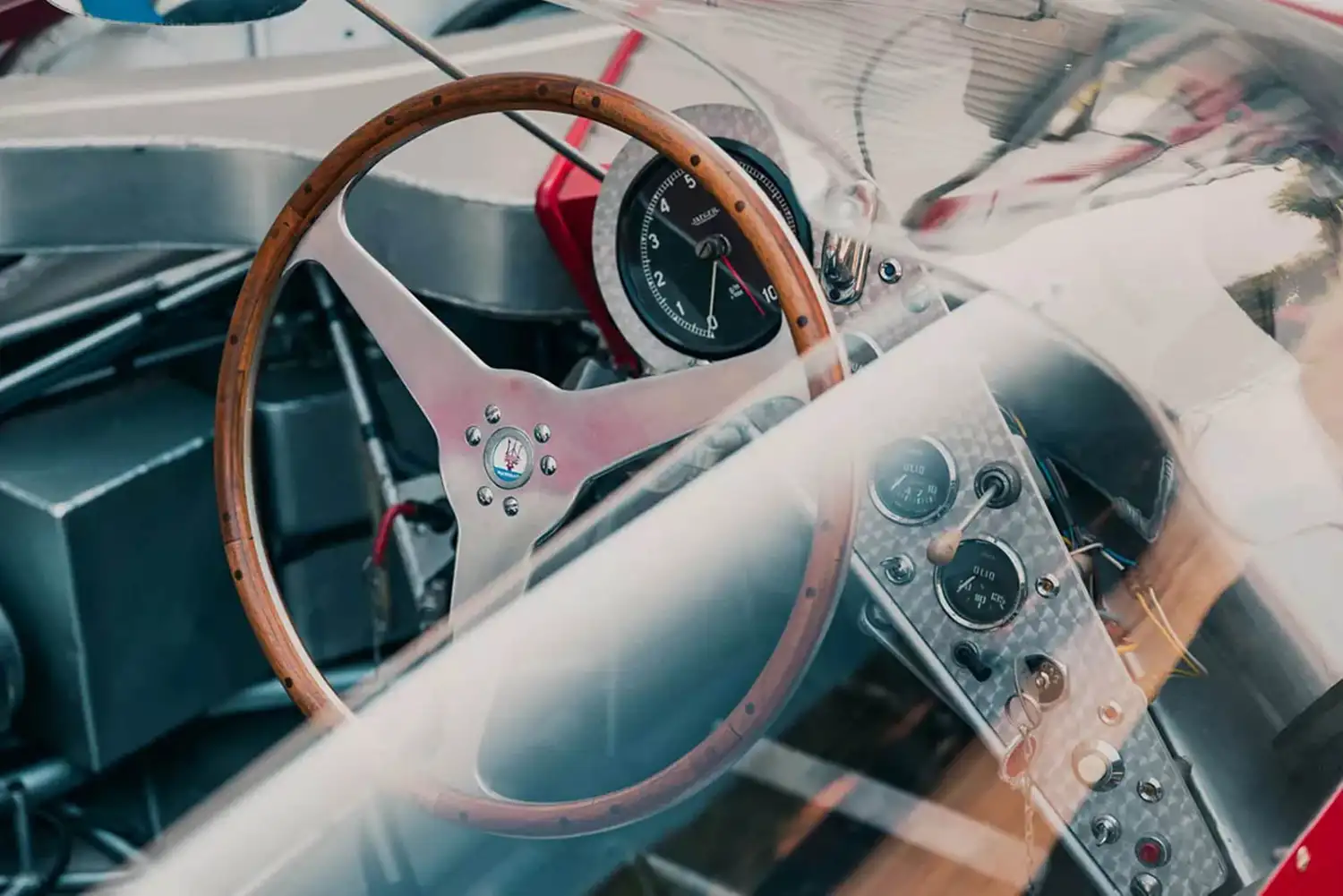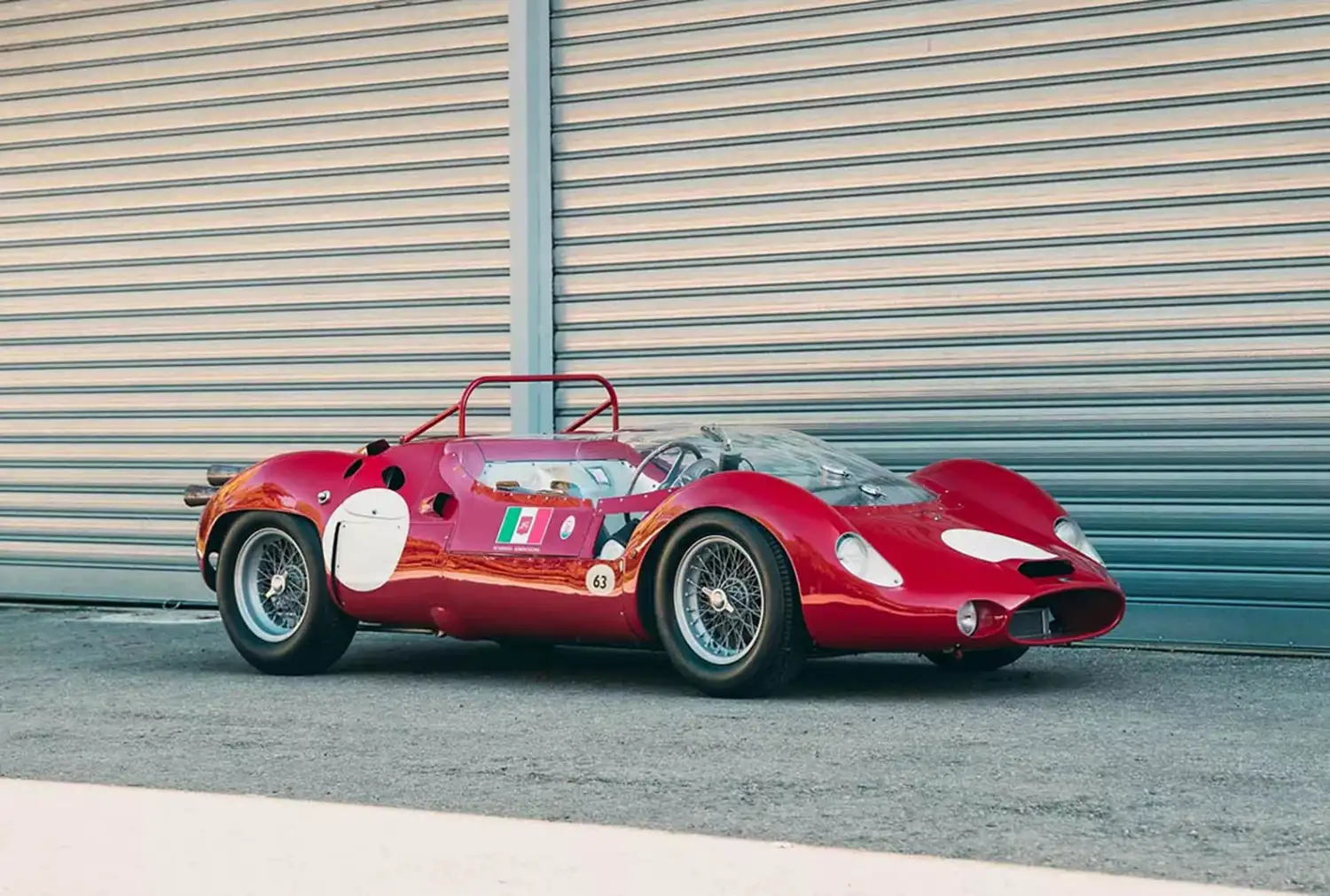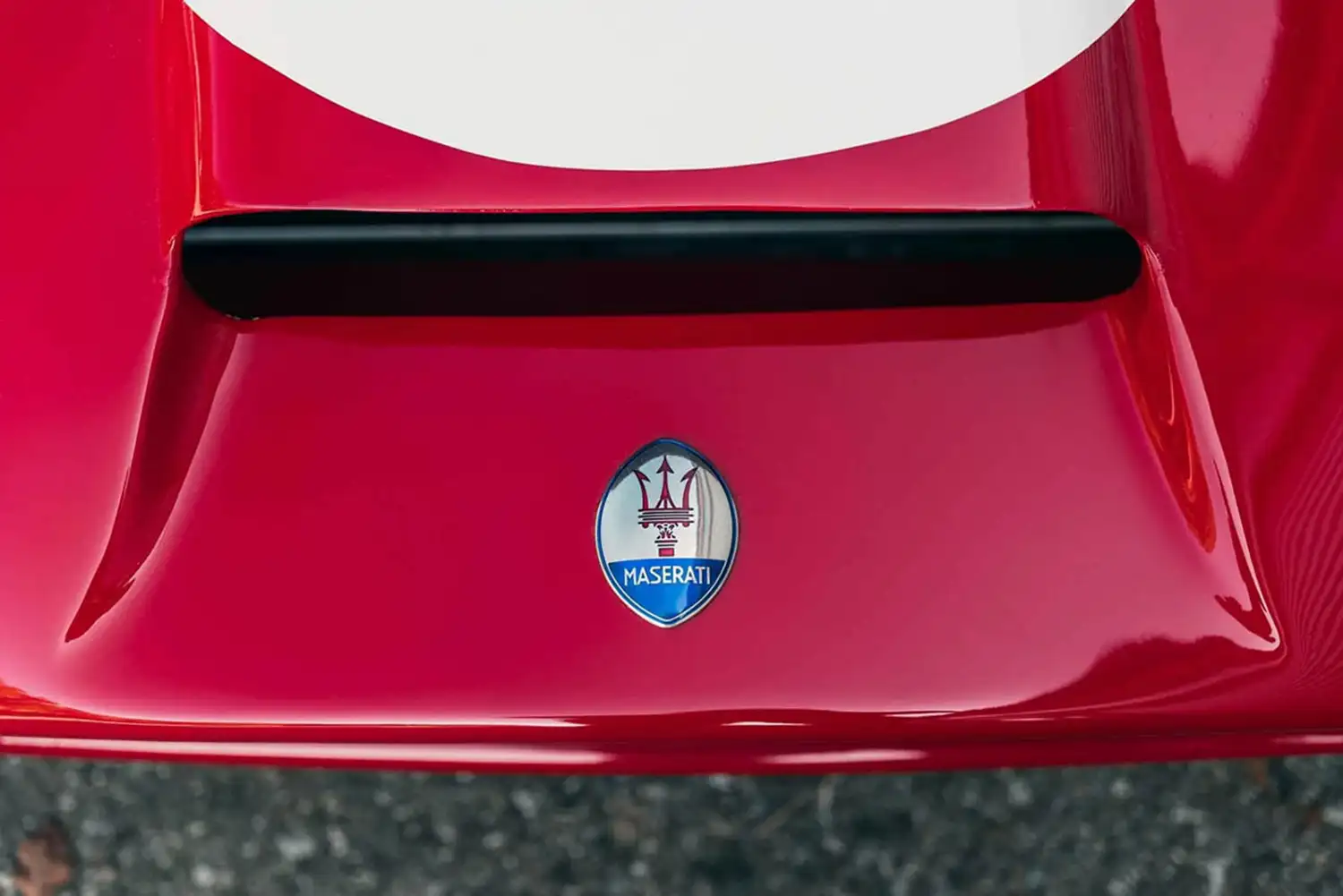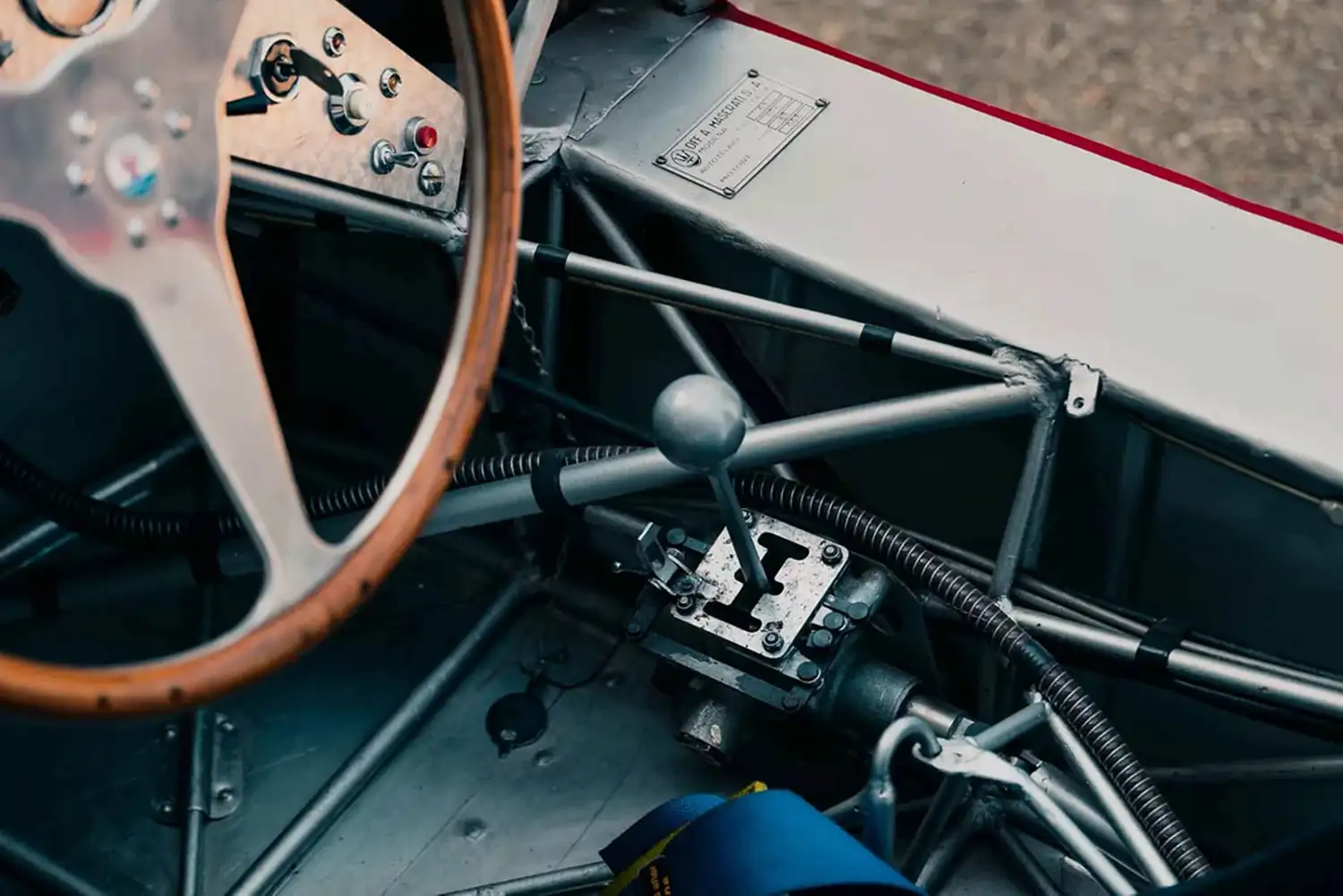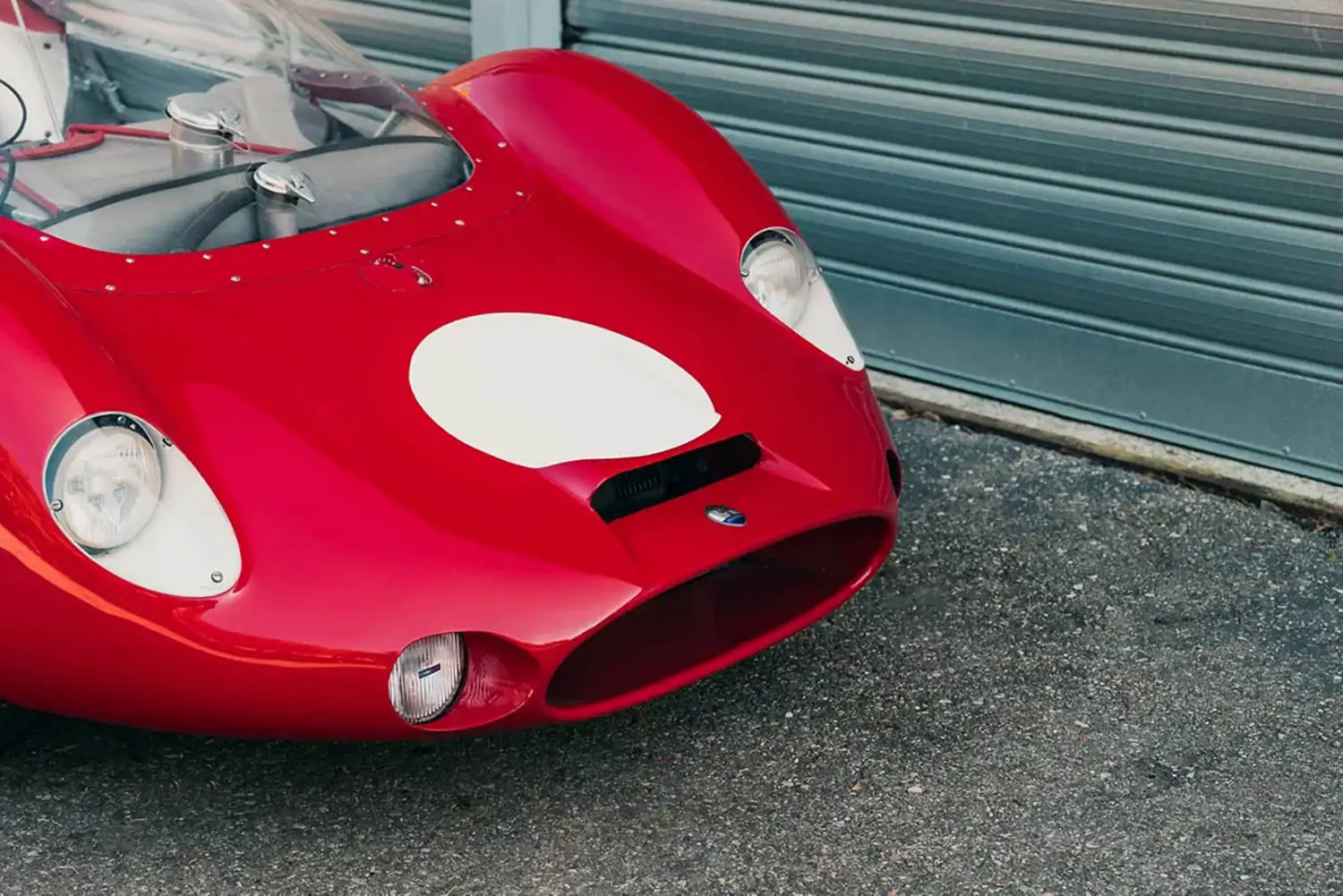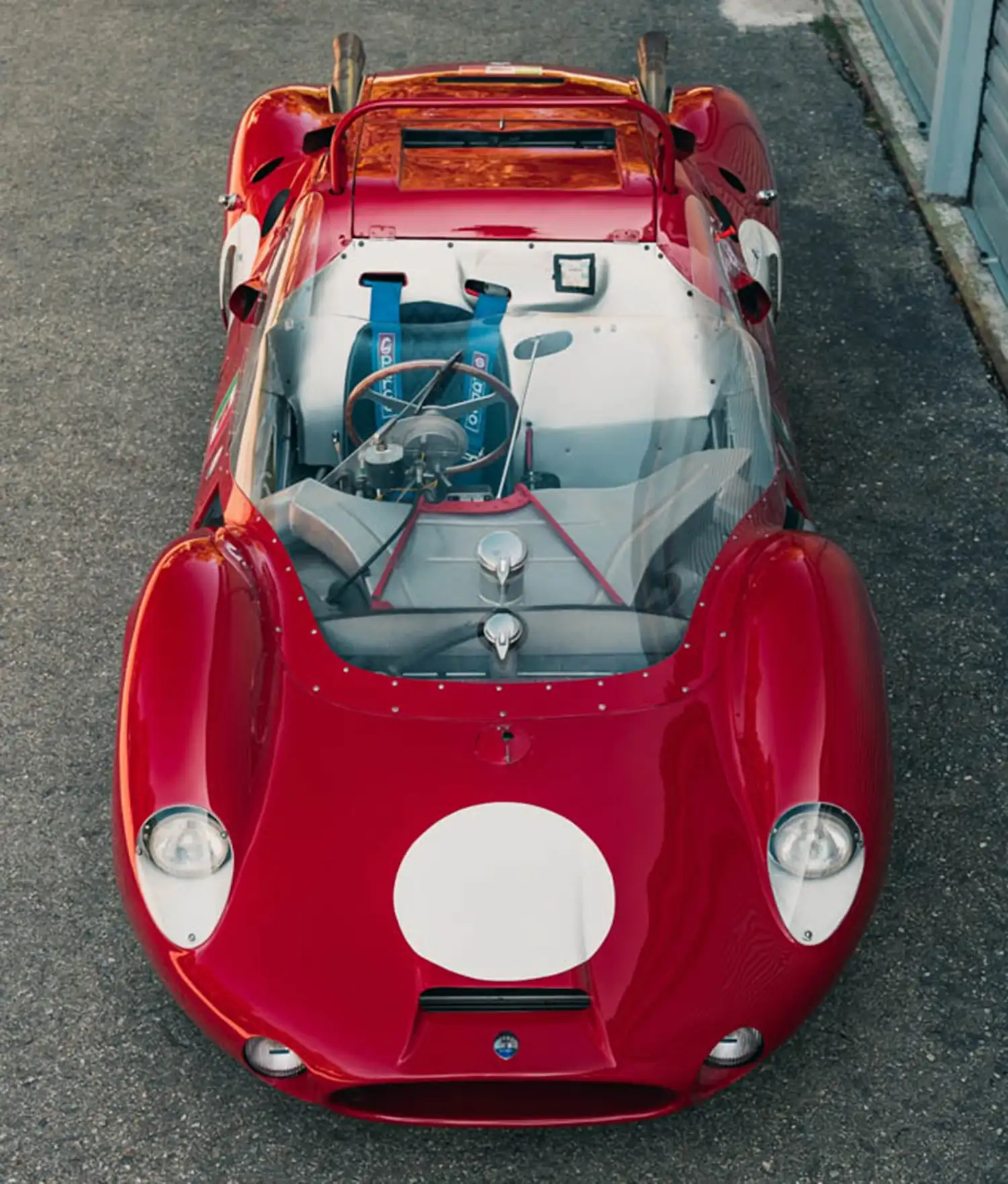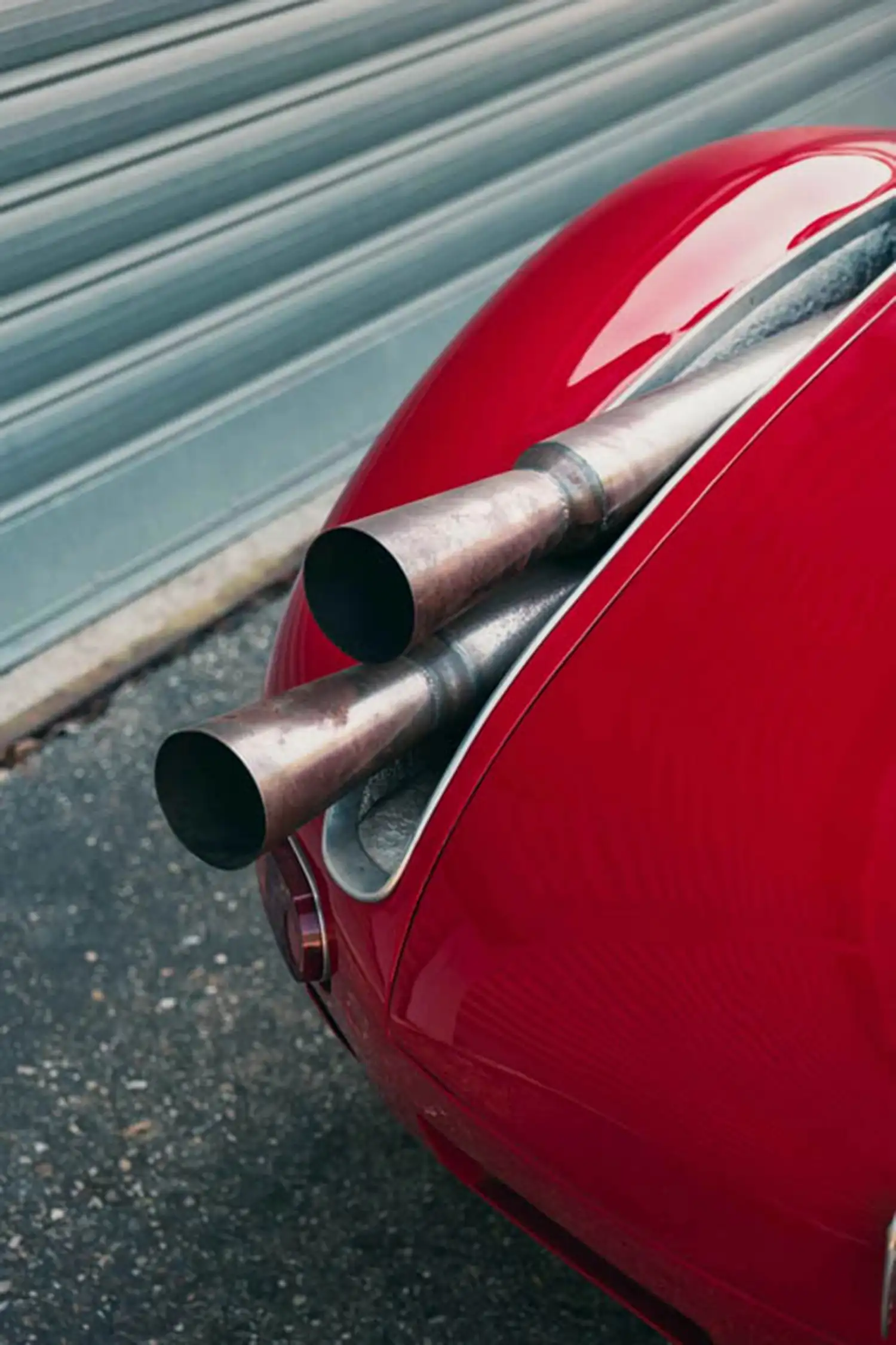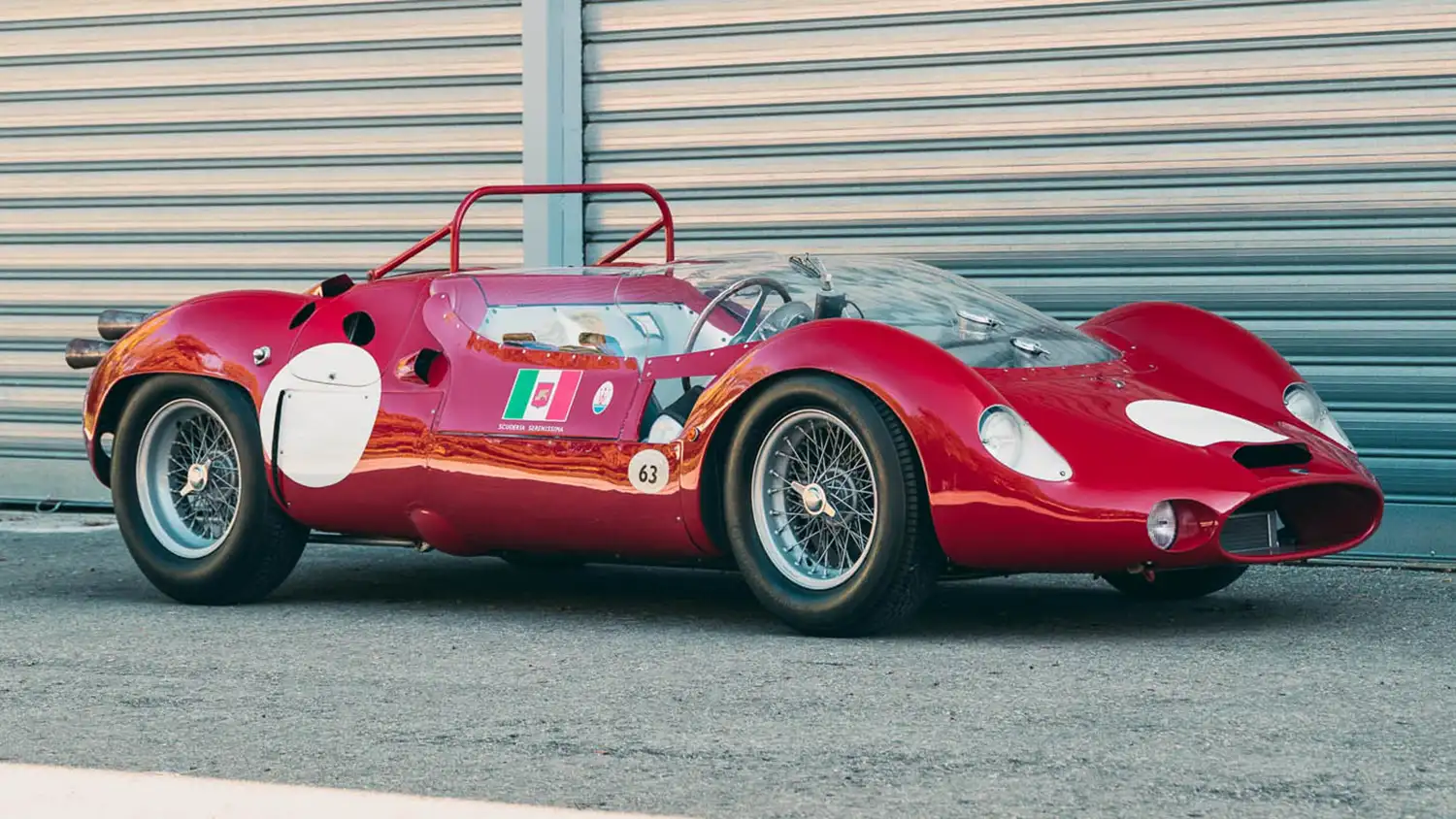
The Maserati Tipo 60 represented a revolution in sports car design. Built for privateers competing in the 2-litre category, it replaced the 200S model. By the late 1950s, British car manufacturers were moving towards innovative and expensive monocoque structures, but Maserati’s chief engineer, Giulio Alfieri, had to innovate on a limited budget.
Alfieri created a space frame made of approximately 200 small-section tubes, arranged in triangular formations and reinforced in high-stress areas. This design resulted in an extremely light yet torsionally rigid construction. The Tipo 60’s engine was mounted behind the front axle and tilted 45° to the right to lower the center of gravity and maintain a low bonnet line. The transaxle transmission was derived from the one used in the 250F. The front suspension was independent, while a De Dion axle was used at the rear. Telescopic dampers and disc brakes were used all around, and steering was done by a modern rack-and-pinion system.

The Tipo 60, with its groundbreaking design, received criticism when it first appeared on the racing scene. It represented a shift from endurance races held on public roads to race tracks and closed street circuits. Its extremely low body line and high protruding wheel arches gave it an odd look. The windscreen, inclined far backward to comply with regulations, offered a view of the innovative chassis design rather than wind protection. Despite its unusual appearance, the car soon earned the nickname “Birdcage,” though it was never officially named that way.
The success of the 2-litre Tipo 60 in Italy, and factory driver Stirling Moss’s suggestion that the chassis could handle more power, led to the introduction of the Tipo 61 for the 3-litre category. The Tipo 60/61 cars had a significant weight advantage over competitors like Ferrari, Aston Martin, and Jaguar, and their excellent handling made them popular with both professional and amateur drivers. They dominated hill climb events in the early 1960s and achieved significant victories, including two overall wins at the Nurburgring 1000kms with Lloyd Casner’s Camoradi racing team.
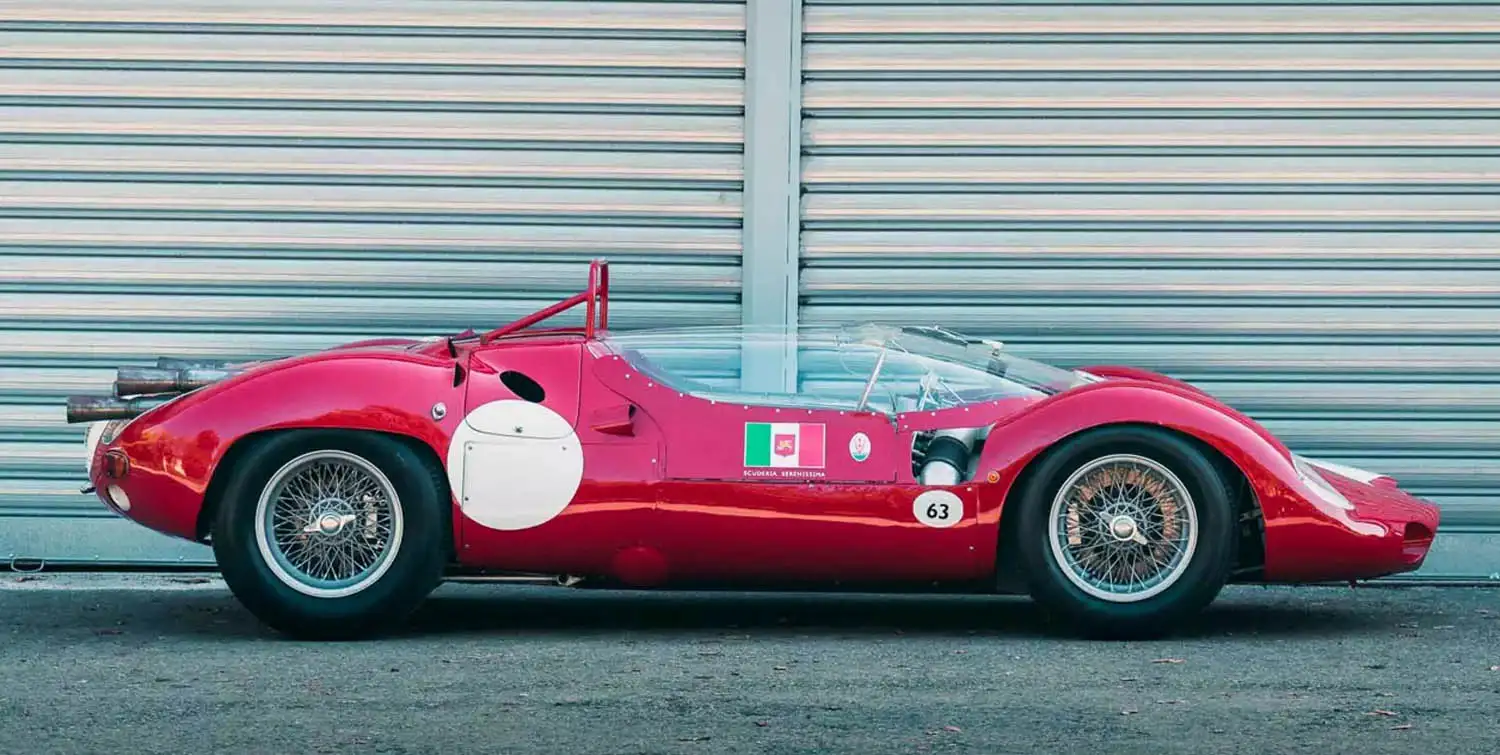
Tipo 60
- Chief Engineer: Giulio Alfieri
- Engine: 4-cylinders in-line, dry sump, tilted 45° to the right, 1990cc, 200hp
- Transmission: Transaxle with integrated differential, 5-speed + reverse
- Chassis: “Birdcage” type space frame, constructed using a large amount of small-section tubes. Front-mounted engine.
- Body: Hand-crafted from aluminum by Gentilini & Allegretti
- Vehicles Produced: 6
- Racing Class: 2-litre sport cars
- Competition Years: 1959-1965
- Notable Entrant Teams: Officine Alfieri Maserati, Scuderia Serenissima, various privateers
- Notable Drivers: Stirling Moss, Nino Vaccarella, Odoardo Govoni, Briggs Cunningham
- Principal Race Victories: Coupe Delamarre-Debouteville Rouen 1959, Preis Zeltweg 1960
Tipo 61
- Chief Engineer: Giulio Alfieri
- Engine: 4-cylinders in-line, dry sump, tilted 45° to the right, 2890cc, 250hp
- Transmission: Transaxle with integrated differential, 5-speed + reverse
- Chassis: “Birdcage” type space frame, constructed using a large amount of small-section tubes. Front-mounted engine.
- Body: Hand-crafted from aluminum by Gentilini & Allegretti
- Vehicles Produced: 17 (including 1 converted Tipo 60)
- Racing Class: 3-litre sport cars
- Competition Years: 1959-1963
- Notable Entrant Teams: Scuderia Camoradi, various privateers
- Notable Drivers: Stirling Moss, Dan Gurney, Lloyd Casner, Masten Gregory, Bob Drake, Carroll Shelby, Jim Hall, Ken Miles, Briggs Cunningham, Roger Penske
- Principal Race Victories: Cuba Grand Prix 1960, Nurburgring 1000kms 1960 & 1961
Source: Maserati
This Article use tools from Chatgpt
